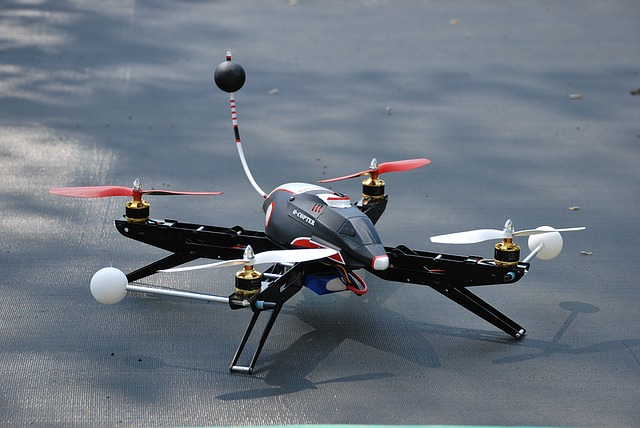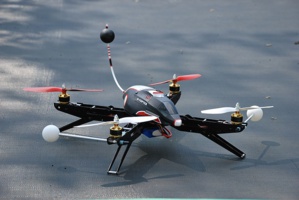Dailycsr.com – 04 July 2016 – The utilities in natural gas, as well as water and electric sectors are showing a growing interest in “drone technology”. Moreover, the recent drone technology seems to have the potential to become the “best practice” in the utilities sector as more and more projects in the same sectors are incorporating drone technology.
The “2016 Strategic Directions: Smart City/Smart Utility report” of Black & Veatch show that over sixty percent of survey subjects consider drone as a valuable asset that contributes in their “construction, maintenance and operations programs”. In the words of the “Global Chief Technology Officer” at Black & Veatch, Brad Hardin:
“But just owning the drone equipment will not be a differentiator. The innovative things that utilities do with the data they capture will create the competitive advantage for them.”
Investing in drone technology proves to be less expensive for the natural gas and electric distributors in comparison to other “more costly” methods like “using helicopters and line inspection crews” as the former returns “a strong interest in pipeline and power line project inspections and image capture”, whereby the drone popularity gets justified.
However, there are certain hurdles to overcome before the drone technology gets widely accepted. To start with, “current federal mandates” in regards to automated aerial systems need to undergo change. As using drones for large scale inspection turns out to be a challenge for the utilities sectors under the present “Federal Aviation Administration guidelines”.
At present, the regulations require a person to keep a constant watch on the drone from the operating area, says Brian Melton from the “Technology Strategist in Black & Veatch’s water business”, whereby he adds:
“However, outside of 50 to 100 yards, a drone is usually not easily visible to the operator. That makes miles-long inspections very difficult, if not impossible.”
Other regulatory constraints include “a pilot’s license” for operating drone in commercial scenario, while the machine should be “less than 55 pounds”. However, many want to add data capturing facility in the drone besides its present function of capturing image for the former provides “additional operational and construction information”.
Likewise, fixing a LIDAR, “remote sensing technology” to measure and analyse objects gives justified reasons, while the technology of LIDAR scanning generated from drones “detailed 3D point cloud” can be used directly “within many design applications today”. While, Hardin notes:
“This allows designers to leverage accurate information from real-world conditions. It also keeps them from having to start their work with outdated information or a blank screen and generate everything from scratch.”
Moreover, Melton concludes:
“As drone use becomes more accepted and implemented, those working to provide design, engineering and construction services to utilities must adopt drone capabilities. We expect their use will climb sharply.”
References:
ethicalperformance.com
The “2016 Strategic Directions: Smart City/Smart Utility report” of Black & Veatch show that over sixty percent of survey subjects consider drone as a valuable asset that contributes in their “construction, maintenance and operations programs”. In the words of the “Global Chief Technology Officer” at Black & Veatch, Brad Hardin:
“But just owning the drone equipment will not be a differentiator. The innovative things that utilities do with the data they capture will create the competitive advantage for them.”
Investing in drone technology proves to be less expensive for the natural gas and electric distributors in comparison to other “more costly” methods like “using helicopters and line inspection crews” as the former returns “a strong interest in pipeline and power line project inspections and image capture”, whereby the drone popularity gets justified.
However, there are certain hurdles to overcome before the drone technology gets widely accepted. To start with, “current federal mandates” in regards to automated aerial systems need to undergo change. As using drones for large scale inspection turns out to be a challenge for the utilities sectors under the present “Federal Aviation Administration guidelines”.
At present, the regulations require a person to keep a constant watch on the drone from the operating area, says Brian Melton from the “Technology Strategist in Black & Veatch’s water business”, whereby he adds:
“However, outside of 50 to 100 yards, a drone is usually not easily visible to the operator. That makes miles-long inspections very difficult, if not impossible.”
Other regulatory constraints include “a pilot’s license” for operating drone in commercial scenario, while the machine should be “less than 55 pounds”. However, many want to add data capturing facility in the drone besides its present function of capturing image for the former provides “additional operational and construction information”.
Likewise, fixing a LIDAR, “remote sensing technology” to measure and analyse objects gives justified reasons, while the technology of LIDAR scanning generated from drones “detailed 3D point cloud” can be used directly “within many design applications today”. While, Hardin notes:
“This allows designers to leverage accurate information from real-world conditions. It also keeps them from having to start their work with outdated information or a blank screen and generate everything from scratch.”
Moreover, Melton concludes:
“As drone use becomes more accepted and implemented, those working to provide design, engineering and construction services to utilities must adopt drone capabilities. We expect their use will climb sharply.”
References:
ethicalperformance.com


 Drone Technology: A Growing Interest Of Utilities’ Sector
Drone Technology: A Growing Interest Of Utilities’ Sector





 Companies
Companies